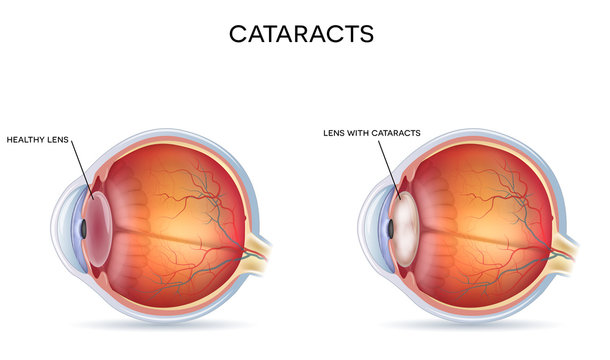Old age not only comes with wrinkles and grey hair but also with poor immunity, health issues, and blurred vision. And as you get older, this gets even worse. While aging is the prime cause of multiple visual problems, factors like diabetes, prolonged UV exposure, and eye injuries contribute to eye disease formation. The most common is Cataract.
A common eye condition that causes clouding of the natural lens, leading to blurred vision is called Cataract. In fact, research indicates that in Australia, cataracts are the second most common cause of bilateral vision impairment (Croakey Professional Services 2022) and cataract surgery is the most common elective surgical procedure (ACSQHC 2021). Also, people of the age 40 and above remain at the highest risk.
However, cataracts are treatable. The only thing you have to do is to find a good Cataract Surgeon and you can have them removed. But how do you know if you have cataracts in the first place?
Let’s find out more about cataract, its symptoms, and the possible treatment available.
What is Cataract?

As mentioned earlier, cataract refers to clouding visions. The contact lens is a clear, flexible structure, made of proteins that helps in seeing things. When this lens gets cloudy or you start feeling that you are seeing the world through a dirty window, the condition is called cataract. Overtime, the condition gets worse and you may have a hard time carrying even the routine tasks. In fact, cataracts are the rising cause of blindness in adults worldwide.
Symptoms of Cataracts
Before you undergo cataract surgery, you need to have an eye checkup to determine whether you have cataract condition or not. But how do you know the first symptom of cataract? Well, here are a few things that you can notice:
1. Cloudy Vision: Blurred or cloudy vision is one of the primary symptoms of cataract. Though most of you may ignore this and think you need a prescription change for your glasses, it’s mostly not the case if you are above the age of 40. However, a stronger prescription won’t help with blurry vision due to cataracts.
2. Glare and Halos: You will most likely notice this one while driving at night. If you have a cataract, you’ll see a halo effect around the bright lights like headlights and street lamps. In other words, you will have to focus on an image like a camera. It is because the cloud on your contact lens makes everything blurry and scatters the light entering the eye.
3. Sensitivity to Light: Another symptom of cataract is the light sensitivity. It means that a person with cataract condition will face difficulty in keeping their eyes wide open in bright light. In fact, too much exposure to light can cause headaches.
4. Double Vision: Cataracts can cause double vision. You may start seeing a ghost image next to what you are actually seeing. So, to check if you have cataracts, close one eye at a time and see if the double vision remains. If so, you possibly have cataracts in the open eye.
Also, having double vision is painful as well as frustrating and you need to see an eye doctor as soon as possible for Cataract Surgery Australia.
5. Fading or Yellowing of Colours: Cataracts make it harder to distinguish shades of colours. They may appear to be faded, or yellowish due to tinted filters that appear in the contact lens.
If any of these cataract symptoms sound familiar, you should see your eye doctor. In case you are diagnosed with advanced cataracts, a cataract surgeon may recommend cataract surgery.
When to Consider Cataract Surgery?
Though early cases of cataracts might be treated with medication, surgery is a viable option to restore clear vision.
In Australia, cataract surgery is widely available and expert cataract surgeons like Prof. Chameen Samarawickrama offers advanced techniques and ensures that the patient has a quick recovery and gets improved vision.
However, if you still wondering whether you need a cataract surgery, you might consider these:
- It is getting harder for you to do daily tasks such as reading or driving.
- Your vision impairment is affecting your quality of life.
- Prescription glasses are no longer beneficial.
Conclusion
A natural part of aging, cataracts are inevitable. However, you can delay their arrival by having a healthy diet, wearing UV-blocking sunglasses, and using protective eyewear while playing sports. Also, cataracts don’t have to impact your quality of life. Recognising cataract symptoms early can help make an informed decision about getting a cataract surgery in Australia.
If you’re in Australia, contact Prof. Chameen Samarawickrama, an expert cataract surgeon to schedule your eye exam today!

I am really inspired with your writing abilities as well as with the structure on your weblog. Either way keep up the excellent quality writing, it’s uncommon to see a nice weblog like this one nowadays.
Awesome!
This was really helpful! I’ve been noticing some changes in my vision lately, and now I understand what signs to look out for. Thank you for explaining it well.